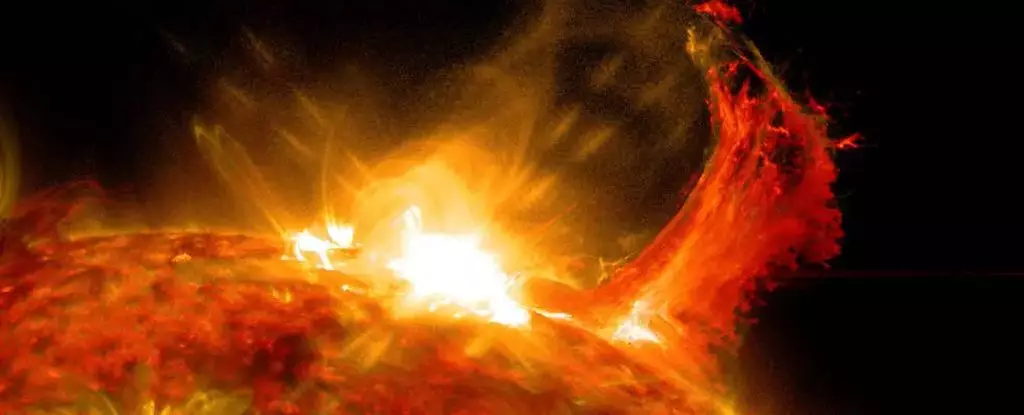To the untrained eye, the Sun can appear as a steadfast presence in our daily lives—a glowing orb that rises and sets with unwavering consistency. However, beneath this façade of stability lies a dynamic environment characterized by violent upheavals and complex magnetic interactions. The Sun, composed predominantly of plasma—a hot, electrically charged gas—is perpetually engaged in a tumultuous dance governed by its magnetic field. These interactions manifest as solar phenomena such as sunspots, solar flares, and coronal mass ejections (CMEs), all of which have significant implications for both space weather and terrestrial technology.
The unpredictable nature of solar activity poses considerable challenges for scientists seeking to understand and predict these events. Coronal mass ejections, in particular, are noteworthy for their capacity to disrupt Earth’s magnetosphere and cause a spectrum of consequences ranging from satellite damage to widespread electrical outages. Traditional methods of forecasting these phenomena often fall short, but advancements in machine learning technologies may offer new insights into predicting the next solar storm.
Recent research led by Sabrina Guastavino and her team at the University of Genoa highlights the growing potential of artificial intelligence in enhancing our understanding of solar dynamics. The researchers focused on a significant storm event slated for May 2024, which involved a series of potent flares emanating from the active solar region 13644. By training algorithms on extensive datasets accumulated over decades of solar observations, the team aimed to reveal patterns that typical forecasting techniques might overlook.
The application of machine learning to solar physics not only marks a significant technological advancement but also addresses an urgent need in predicting solar activity’s impact on Earth. By analyzing historical solar data, the AI models successfully forecasted the occurrence and intensity of solar flares as well as associated CMEs with remarkable precision. Such forecasting capabilities could presage geomagnetic storms, helping to mitigate the risks posed to satellite systems, communication networks, and even power grids.
The findings from Guastavino’s study demonstrated a striking improvement in prediction accuracy when utilizing machine learning compared to traditional methodologies. The algorithms analyzed complex data sets and identified trends that would typically be obscured by the noise inherent in solar observations. The success of these predictive models carries profound implications for society, especially as our dependence on technology continues to escalate.
For instance, accurate predictions of CMEs can enable power companies and telecommunication providers to prepare for potential disruptions. By issuing timely alerts, industries can implement protective measures—such as temporarily shutting down or rerouting sensitive equipment—minimizing the disruption of critical services. Additionally, improved forewarnings of geomagnetic storms could provide greater safety for astronauts in orbit by allowing them to seek shelter from solar radiation.
The potential applications for this machine learning approach extend beyond merely predicting solar flares and CMEs. It could be instrumental in understanding long-term solar behavior and the intricate interplay of cosmic forces impacting our planetary environment. Researchers might hone in on the conditions leading to significant solar events and unveil correlations that have, so far, eluded traditional scientific inquiry.
Moreover, skywatchers and aurora enthusiasts may soon find that forecasts for northern and southern lights become considerably more reliable, offering a more predictable spectacle for observers hoping to glimpse the awe-inspiring colors ignited by solar activity.
As solar activity continues to influence life on Earth in myriad ways, the integration of artificial intelligence into solar research stands to revolutionize our capacity to anticipate these cosmic events. The study led by Guastavino et al. not only underscores the potential of machine learning in improving predictive accuracy but also opens avenues for future research exploring the Sun’s enigmatic behavior. By sharpening our understanding of solar dynamics, these advancements will play a vital role in safeguarding Earth from the formidable forces of our closest star.

